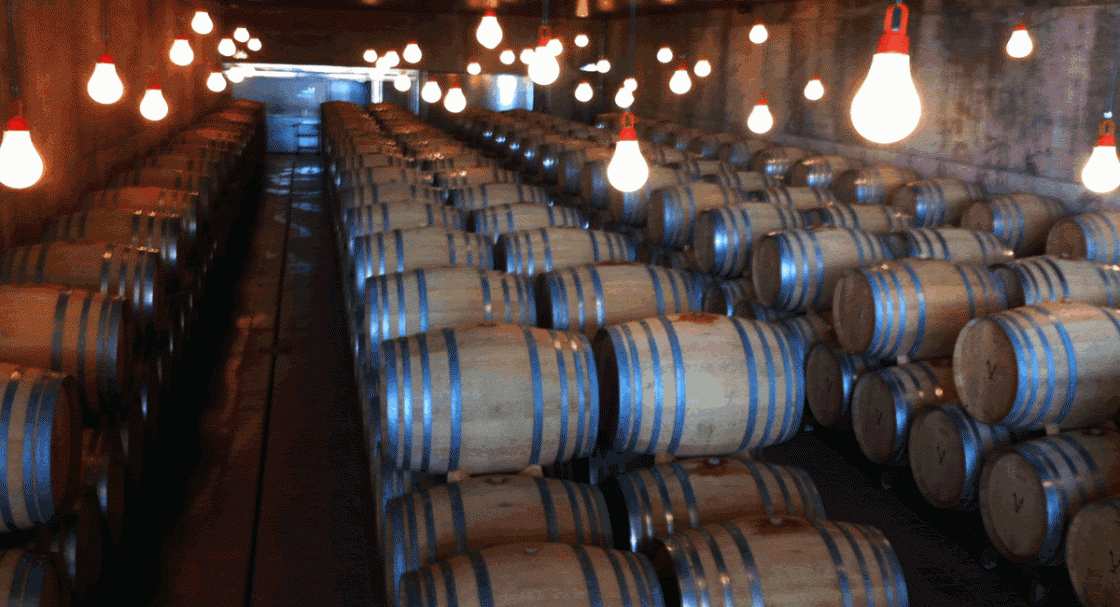“Just a note to thank you for a fantastic trip to Ribera del Duero. We really enjoyed the few days and thought it was put together so well. The welcome we had from all the bodegas was incredibly warm and friendly. We particularly appreciated the smaller set-ups, Bohorquez and Belondrade.”
Kim and Cyndy , October 2015
Our recent Good Wine Tours trip to Ribera del Duero included a visit to the nearby Rueda region – just a short drive south of our base in Valladolid.
There were two good reasons for this vinous detour – first the need for a little respite from Ribera’s unremitting diet of red wines and second the distant but still vivid memory of a particular Rueda wine- first tasted in London a few years ago and then again on a trip to the wonderful Andalucian city of Cordoba last year.
The wine in question – Belondrade Y Lurton.
Right now Rueda is the white wine you are most likely to be poured by the glass in any bar in Spain. Its prevalence is relatively recent for a region only given its Denominacion de Origen in 1980.
Back then entrepreneurial makers like Marques de Riscal chose to settle here so they could produce modern, fresh white wines as the appetite for old-school white Rioja waned.
The chance to use Sauvignon Blanc was too great to resist at a time when Spain wanted to plant international varieties everywhere rather than focus on its own varieties
A look at how plantings have changed between 2000 and 2014 shows how swiftly the love affair with Sauvignon has ended- from 11% of the vineyard area in 2000 to just below 4.5% now. The explanation is in the rehabilitation of the region’s local grape Verdejo, now 87% of the entire D.O. This is part of a national reassertion of the value of many neglected Spanish varieties.
Rueda has 3 separate DOs for its wines :
D.O. Rueda Verdejo (which must be a minimum of 85% Verdejo)
D.O. Rueda (Which must be a minimum of 50% Verdejo)
D.O. Rueda Sauvignon (which must be a minimum of 85% Sauvignon)
Verdejo has been cultivated here for centuries. Even at fairly high yields it can produce fresh, easy drinking wines with a pleasingly creamy texture and a characteristic herbal, bitter twist on the finish. The ideal “by the glass” pour.
With low yields from older vines and in the gifted hands of a wine maker as meticulous and passionate as Marta Baquerizo at Belondrade the results are fabulous.
We arrived at Belondrade in early morning autumnal sunshine. Standing in the vineyards we could see how healthy the vines looked. This has been a ferociously hot and dry year here yet Belondrade’s organically farmed older vines have withstood heat and drought well.
Each plot of grapes is separately fermented in French oak, followed by a selection of the best barrels used to make Belondrade. Quinta Apolonia –the second wine, is a blend of barrels that don’t make the cut for the top wine along with fruit from younger vines which will be aged in tank.
We started our tasting with Quinta Clarisa – a 100% Tempranillo Rosado, deliciously fresh with very more-ish strawberry fruit. In 2008 a D.O. for red and rose wines was added to Rueda –this was our first chance to sample it.
Quinta Apolonia shows its class with really lovely focused fruit and mid –palate weight and texture along side a refreshing lift. While I’d happily enjoy this as an aperitif it’s more than able to partner starters and fish dishes well.
And so to Belondrade with a very French elevage in oak .It compares very favourably with white Bordeaux and white Burgundy. There is a seamless marriage of fruit and oak, mouth –filling flavours and concentration without any sense of heaviness and a very fine long finish.
I left with another layer of happiness to add to my memory of a lovely wine.
No wonder it’s Spain’s number 1 Rueda Wine !
Good wine Tours run exceptional wine tours throughout the year. For our latest tours see OUR WINE TOURS.
Follow us on Twitter for updates and News.
Share this Post


